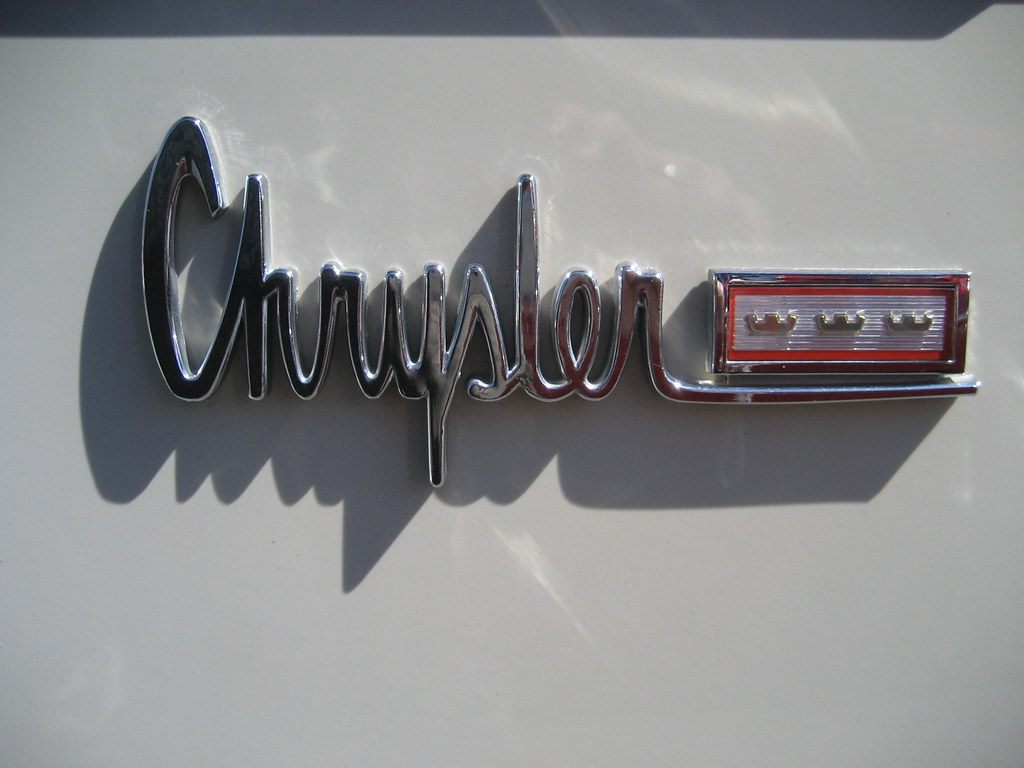
Let’s face it: sometimes, our cars let us down. We’ve all been there, standing in the dealership, filled with the excitement of a new ride, the allure of fresh paint and cutting-edge features. Vehicle manufacturers roll out cars that look promising, sparkling under the showroom lights, but often, they don’t live up to the hype once they hit the real world. It can truly suck after spending tens of thousands of dollars, or committing to a multi-year car loan, only to develop a strong case of buyer’s remorse. But alas, it happens all too often.
Considering how much new and used cars go for these days, you absolutely need to know what you’re getting into before you sign on the dotted line. Making a buying decision based only on the exterior aesthetics and a quick glance at the specs might get you into a world of trouble down the road. Instead of learning the hard way, one of the smartest moves you can make is to learn from other vehicle owners’ mistakes. Their experiences, often born of frustration and unexpected costs, can guide you towards better choices and save you from years of headache and financial strain.
While the initial new car smell eventually fades, the true satisfaction—or deep-seated regret—with a vehicle reveals itself over time. Once the honeymoon period is over, the maintenance bills start rolling in, and the daily driving experience becomes routine, owners begin to truly understand their purchase. We’re talking about the long haul here, beyond a mere 30 days, delving into the ownership experiences that lead drivers to wish they could rewind time and make a different choice. Let’s take a closer look at some of the vehicles that have consistently left their owners shaking their heads in frustration.
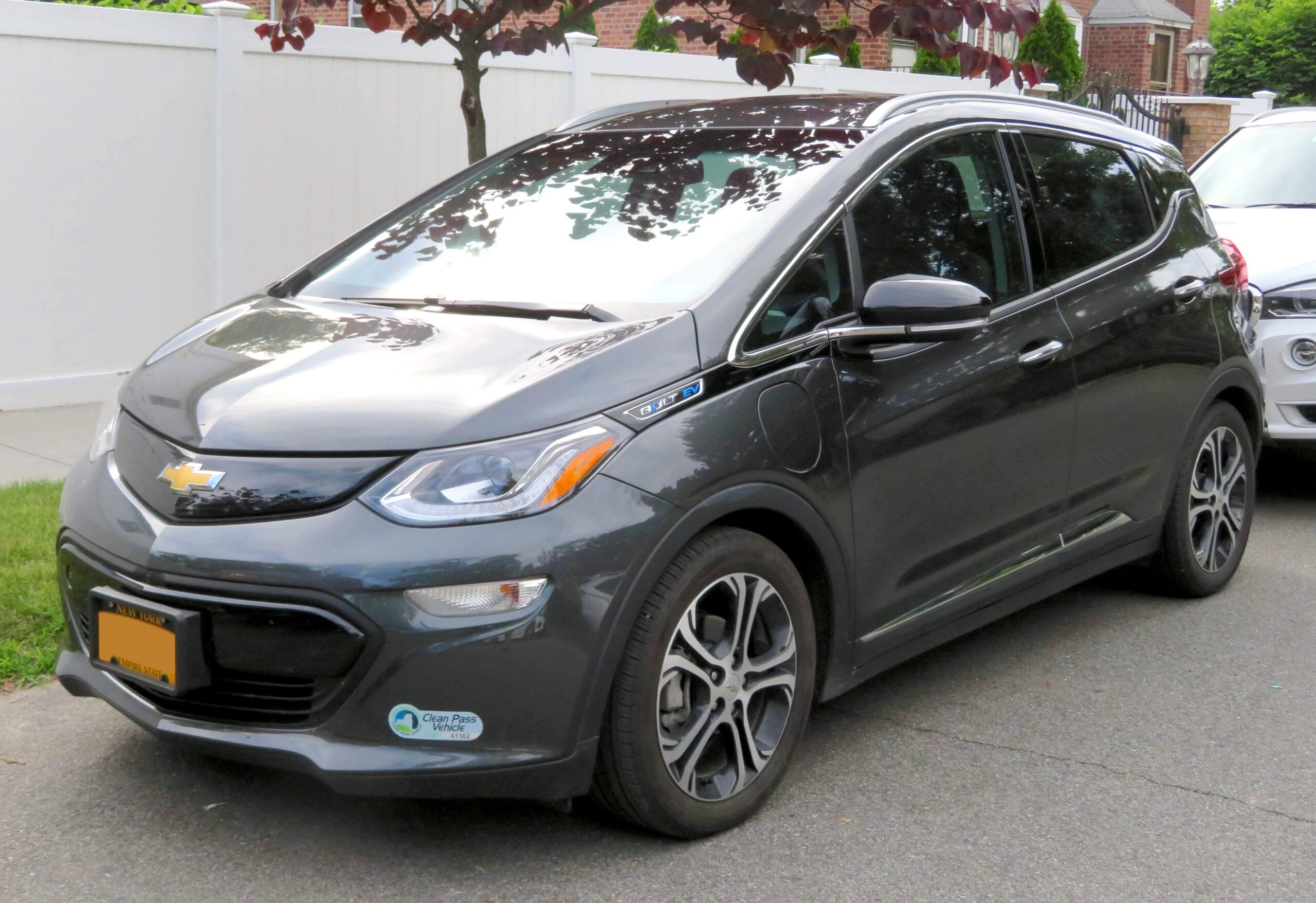
1. **Chevrolet Bolt**The Chevrolet Bolt, General Motors’ electric vehicle offering, initially garnered praise for its affordability and a respectable range that made EV ownership more accessible to many. It seemed like a promising contender in the burgeoning electric market, offering a practical solution for daily commutes without breaking the bank. However, despite these attractive qualities, the Bolt has been plagued with a series of significant and infamous problems that have overshadowed its initial appeal, leaving many owners feeling quite regretful about their purchase.
Undoubtedly, the most notorious issue associated with the Chevrolet Bolt involves its battery-related fires. This serious safety concern led to widespread and expensive recalls in both 2020 and 2021, creating a massive headache for owners and a significant blow to the model’s reputation. The problem specifically stems from lithium-ion batteries manufactured by LG, which were found to be prone to short-circuiting, overheating, and ultimately igniting into flames, posing a direct threat to vehicle occupants and property.
This core battery defect didn’t just cause inconvenience; it was a critical safety hazard that demanded immediate and comprehensive action, forcing a halt to production and a massive replacement program. For many owners, the constant worry of a potential fire transformed their driving experience from one of electric eco-friendliness to one of persistent anxiety. It became a clear example of how a fundamental component can undermine an entire vehicle’s integrity, regardless of its other perceived benefits.
Beyond the alarming battery issues, the Chevrolet Bolt also falls short in several other key areas that contribute to buyer’s remorse. Owners frequently point out that the vehicle’s ride quality is merely “so-so,” lacking the refinement and comfort expected in modern cars. Rear passenger space is another common complaint, often described as cramped or inadequate, which severely limits the car’s practicality for families or anyone needing to transport multiple adults comfortably.
Furthermore, the handling, while functional, is often critiqued as uninspired, failing to deliver an engaging or particularly smooth driving experience. These combined factors – safety risks from battery fires, coupled with an otherwise underwhelming ride, limited interior space, and mediocre handling – paint a picture of a vehicle that, despite its initial promise of affordability and range, ultimately disappoints on multiple fronts after extended ownership.
Car Model Information: 2022 Chevrolet Bolt EUV FWD LT
Name: Chevrolet Bolt EV
Caption: 2022 Chevrolet Bolt EV
Manufacturer: General Motors
Production: 2016–2023
ModelYears: 2017–2023
Class: Subcompact car
BodyStyle: hatchback
Layout: Front-engine, front-wheel-drive layout
Predecessor: Chevrolet Spark EV
Categories: 2020s cars, All Wikipedia articles in need of updating, All articles containing potentially dated statements, All articles to be merged, All articles with unsourced statements
Summary: The Chevrolet Bolt EV (marketed in Europe as Opel Ampera-e) is a battery electric subcompact hatchback manufactured and marketed by General Motors under its Chevrolet brand from late 2016 until late 2023, with a brief hiatus between mid-2021 and early 2022.
The first-generation Bolt was developed and manufactured with LG Corporation. Sales of the 2017 Bolt began in California in December 2016; it was released nationwide and international markets release in 2017. A rebadged European variant was marketed as the Opel Ampera-e in mainland Europe. In 2017, the Bolt was the second-best-selling plug-in car in the United States. It was named the 2017 Motor Trend Car of the Year, the 2017 North American Car of the Year, an Automobile magazine 2017 All Star, and was listed in Time magazine’s Best 25 Inventions of 2016. The Ampera-e was discontinued after 2018. By the end of 2020, GM had sold 112,000 Bolt and Ampera-e cars worldwide. The first-generation Bolt had been subject to at least three recalls due to battery fire risks.
In mid-2023, GM officials said they would discontinue the Bolt; after outcry, they announced plans for a next-generation model. The second-generation Bolt, based on the Chevrolet Bolt EUV, was unveiled on October 9, 2025 and will go on sale in 2026 as a 2027 model.
Get more information about: Chevrolet Bolt
Buying a high-performing used car >>>
Brand: Chevrolet Model: Bolt
Price: $21,495 Mileage: 30,332 mi.
Read more about: Beyond the Icons: Unearthing 14 Underappreciated Muscle Cars That Deserve Your Attention
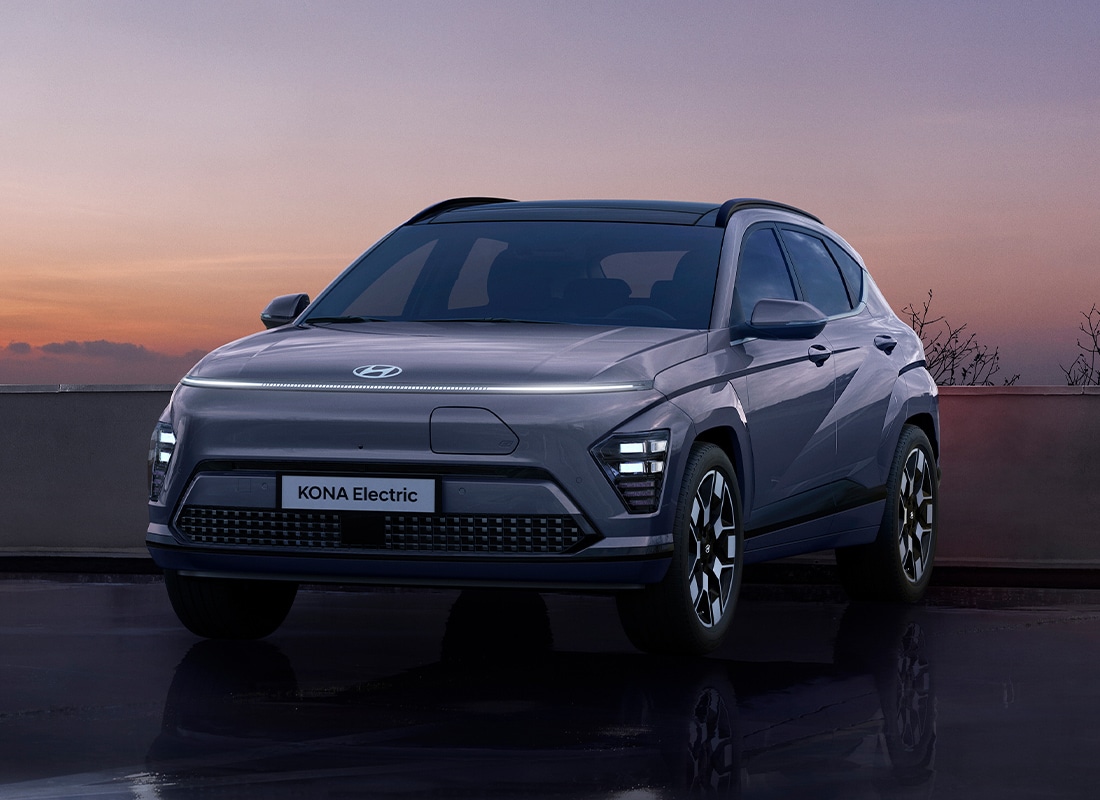
2. **Hyundai Kona Electric**Hyundai has certainly been on quite a roll lately, delivering some truly interesting and well-received electric vehicles that have captured attention and earned accolades from consumers and critics alike. Their commitment to the EV market has seen some impressive innovations, pushing boundaries and offering compelling alternatives to gasoline-powered cars. Yet, even successful manufacturers can have a few missteps, and unfortunately, the Hyundai Kona Electric stands out as one of their less triumphant models, proving to be a definite “clunker” for many who bought it.
Much like its Chevrolet counterpart, the Hyundai Kona Electric’s history is marred by troubling battery fires and subsequent recalls. This serious flaw became a significant part of the EV’s narrative, shattering consumer confidence and highlighting a critical safety issue that could not be ignored. Hyundai wisely issued a worldwide recall in both 2020 and 2021, aiming to “nip the fire risks in the bud” by proactively replacing battery packs in all affected EVs. While a responsible move, it underscored the severity of the initial defect and the inconvenience faced by owners.
However, for many owners, the battery issues proved to be just “the tip of the iceberg.” While the context doesn’t elaborate on *other* specific problems, this phrase implies a deeper range of underlying disappointments or malfunctions that become apparent over time. It suggests that once the most glaring safety concern was addressed, other less headline-grabbing but equally frustrating problems emerged, contributing to a broader sense of dissatisfaction. For this reason, the advice to prospective buyers is clear: “Buyer beware!” The Kona Electric, despite its potential, has unfortunately cultivated a reputation for being a problematic choice for long-term ownership.
Car Model Information: 2025 Hyundai PALISADE XRT
Name: Hyundai Kona
Caption: Hyundai Kona N Line (SX2)
Manufacturer: Hyundai Motor Company
Aka: Hyundai Kauai (Portugal)
Production: 2017–present
ModelYears: 2018–present
Class: Subcompact crossover SUV
BodyStyle: SUV
Layout: ubl
Categories: 2020s cars, All-wheel-drive vehicles, All Wikipedia articles in need of updating, All Wikipedia articles written in British English, Articles containing Chinese-language text
Summary: The Hyundai Kona is a subcompact crossover SUV produced by the South Korean manufacturer Hyundai. The first-generation Kona debuted in June 2017 and the production version was revealed later that year. It is positioned between the Venue or Bayon and the Tucson in Hyundai crossover SUV line-up. The battery electric version called the Kona Electric (or Kona EV) was first launched in South Korea during the first half of 2018 and rolled out gradually worldwide afterwards.
Get more information about: Hyundai Kona
Buying a high-performing used car >>>
Brand: Hyundai Model: Kona Electric
Price: $40,788 Mileage: 5,081 mi.
Read more about: Immediate Regret Behind the Wheel: 15 Vehicles Owners Wished They Never Financed at the Dealership
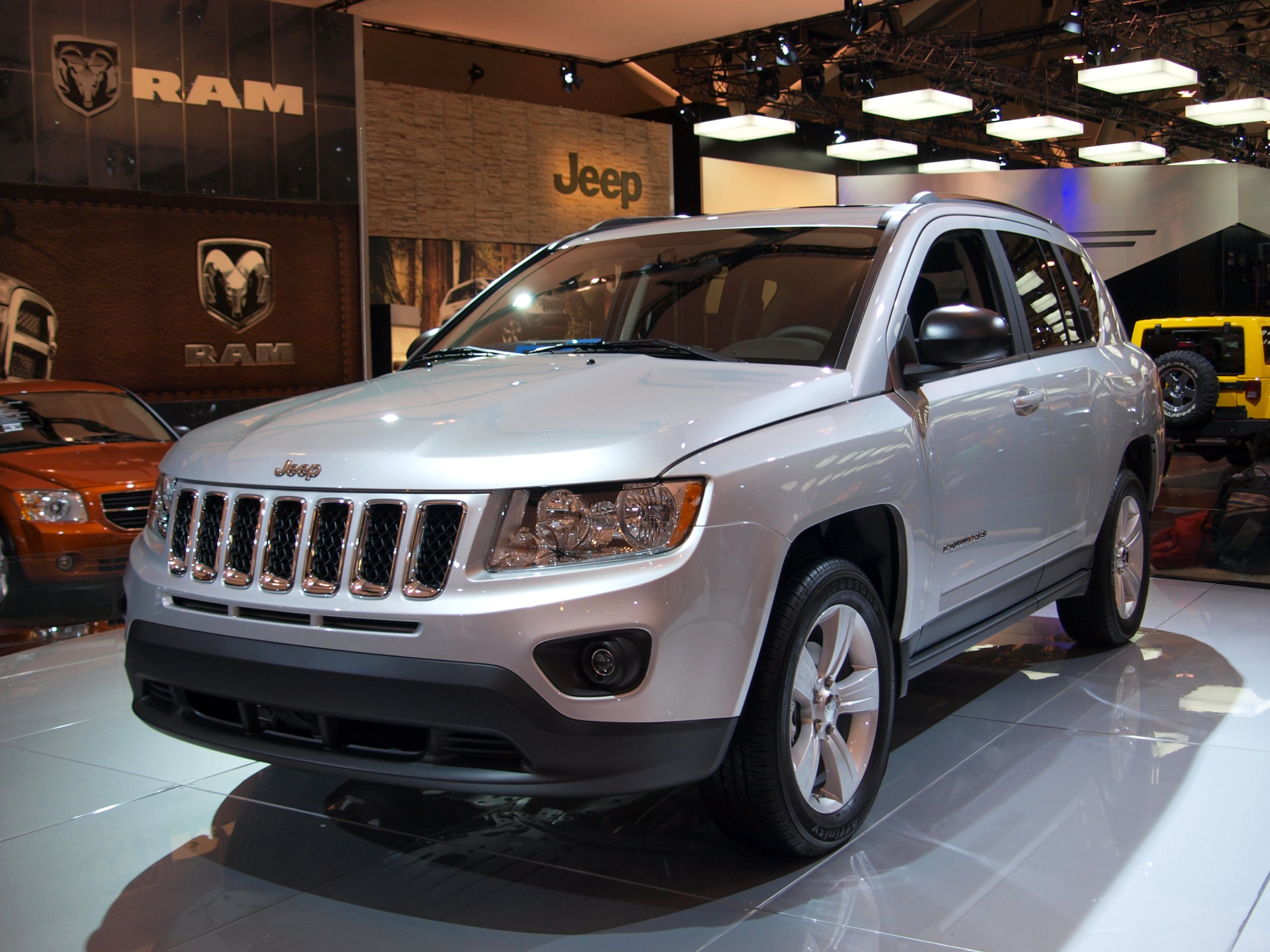
3. **Jeep Compass**For those venturing into the compact SUV market, the Jeep Compass might initially catch the eye with its distinctive styling and the allure of the Jeep brand. However, buyer beware, as this vehicle has been reported to have some seriously persistent issues across various model years, turning what should be a practical family vehicle into a potential headache. Owners who have spent years with a Compass often find themselves regretting their choice, wishing they had steered clear of this particular model to avoid what one might describe as a “migraine headache on wheels.”
One of the most frequent and aggravating issues owners complain about centers around the Jeep Compass’s transmission systems. Whether it’s the continuously variable transmission (CVT) or the 9-speed automatic transmissions, many drivers report experiencing “herky-jerky shifting” that detracts significantly from the driving experience. This isn’t just an annoyance; these transmission units have also been known to suffer from “catastrophic failure,” leading to costly repairs and leaving owners stranded, utterly undermining the vehicle’s reliability and usability.
But the transmission woes are far from the only problems plaguing the Jeep Compass. Owners also frequently report “poor engine performance,” which can lead to a less responsive and enjoyable drive, especially when trying to merge onto highways or navigate challenging terrains. “Excessive oil consumption” is another frustrating issue, forcing owners into more frequent maintenance and unexpected expenses. Furthermore, “electrical system issues” add another layer of complexity and unreliability, potentially impacting everything from infotainment to critical safety features. These multifaceted problems make the Jeep Compass a challenging and often disappointing long-term companion for many drivers.
Car Model Information: 2021 Jeep Grand Cherokee L Limited
Name: Jeep Compass
Caption: 2019 Jeep Compass
Manufacturer: Jeep
Production: 2006–present
ModelYears: 2007–present
Class: Compact crossover SUV
BodyStyle: SUV
Layout: Front-engine, front-wheel-drive layout
Chassis: Unibody
Categories: 2010s cars, 2020s cars, All-wheel-drive vehicles, All Wikipedia articles written in American English, Articles with short description
Summary: The Jeep Compass is a compact crossover SUV, introduced in 2006 for the 2007 model year. The first generation Compass and Patriot, its rebadged variant, were among Jeep’s first crossover SUVs. The second-generation Compass debuted in September 2016 in Brazil and at the Los Angeles International Auto Show in November 2016, sharing a modified platform with the Renegade. It is positioned between the smaller Renegade and the larger Cherokee globally or the Commander in South America. The third-generation Compass debuted in May 2025, built on the STLA Medium by Stellantis, shared with other PSA Groupe vehicles.
Get more information about: Jeep Compass
Buying a high-performing used car >>>
Brand: Jeep Model: Compass
Price: $29,890 Mileage: 51,289 mi.
Read more about: Immediate Regret Behind the Wheel: 15 Vehicles Owners Wished They Never Financed at the Dealership
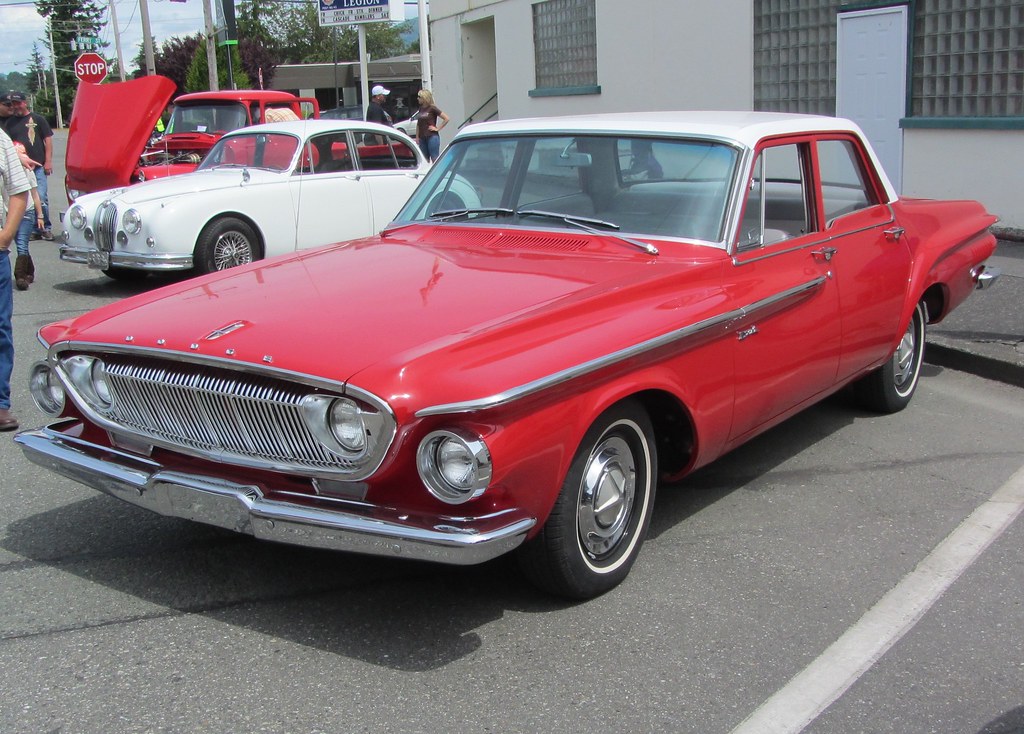
4. **Dodge Dart**When the Dodge Dart was introduced, it aimed to carve out a niche in the compact sedan segment, offering a seemingly stylish and practical option for everyday drivers. However, for many who took the plunge, the Dart quickly revealed itself to be a compact sedan burdened with “full-size car problems.” This unfortunate reality has led countless owners to express profound regret, wishing they had never purchased this particular vehicle, as its long-term reliability simply hasn’t met expectations, creating a continuous source of frustration.
Indeed, when it comes to the Dodge Dart, the question isn’t where to begin with its problems, but rather, where to end. The vehicle appears to be an all-around disappointment, with issues spanning virtually every critical component. Owners have reported significant malfunctions and frustrations “from the transmission to the engine and from the suspension to the brakes,” indicating a systemic lack of durability and quality across the board. This comprehensive list of flaws transforms what should be a straightforward driving experience into a constant battle with mechanical issues.
The depth of owner dissatisfaction with the Dodge Dart is starkly highlighted by external reports. According to Consumer Reports, a highly respected authority on product reliability and consumer satisfaction, “around six in 10 buyers say they are not satisfied with the vehicle.” This is an extraordinarily high percentage of regret, underscoring that the problems are not isolated incidents but rather widespread issues affecting a significant majority of owners. This level of disappointment makes the Dodge Dart a prime example of a car that looks good on paper but fails spectacularly in the crucible of long-term ownership.
Car Model Information: 2015 Dodge Dart SXT
Name: Dodge Dart
Caption: 1966 Dodge Dart GT 2-door hardtop
Manufacturer: Dodge
Production: 1959–1976 (US market)
ModelYears: 1960–1976 (US market)
Class: Full-size
Layout: FR layout
Predecessor: Dodge Coronet#Fourth generation (1957–1959)
Related: Plymouth Valiant,Chrysler Valiant,Dodge Phoenix
Successor: Dodge Aspen,Dodge Diplomat,Talbot Tagora
Categories: 1970s cars, All articles with unsourced statements, Articles with short description, Articles with unsourced statements from December 2023, Articles with unsourced statements from May 2025
Summary: The Dodge Dart is a line of passenger cars produced by Dodge from the 1959 to 1976 model years in North America, with production extended to later years in various other markets.
The production Dodge Dart was introduced as a lower-priced full-size model in 1960 and 1961, but became a mid-size car for one model year for 1962, and was then reduced to a compact for two generations, from 1963 to 1976.
Chrysler had first used ‘Dart’ name plates on two Italian styled show cars, in 1956 and 1957, before it became a Dodge model name. The Dart nameplate was resurrected for a Fiat-derived compact car that was introduced in 2012.
Get more information about: Dodge Dart
Buying a high-performing used car >>>
Brand: Dodge Model: Dart
Price: $9,995 Mileage: 143,082 mi.
Read more about: Beyond the Icons: Unearthing 14 Underappreciated Muscle Cars That Deserve Your Attention
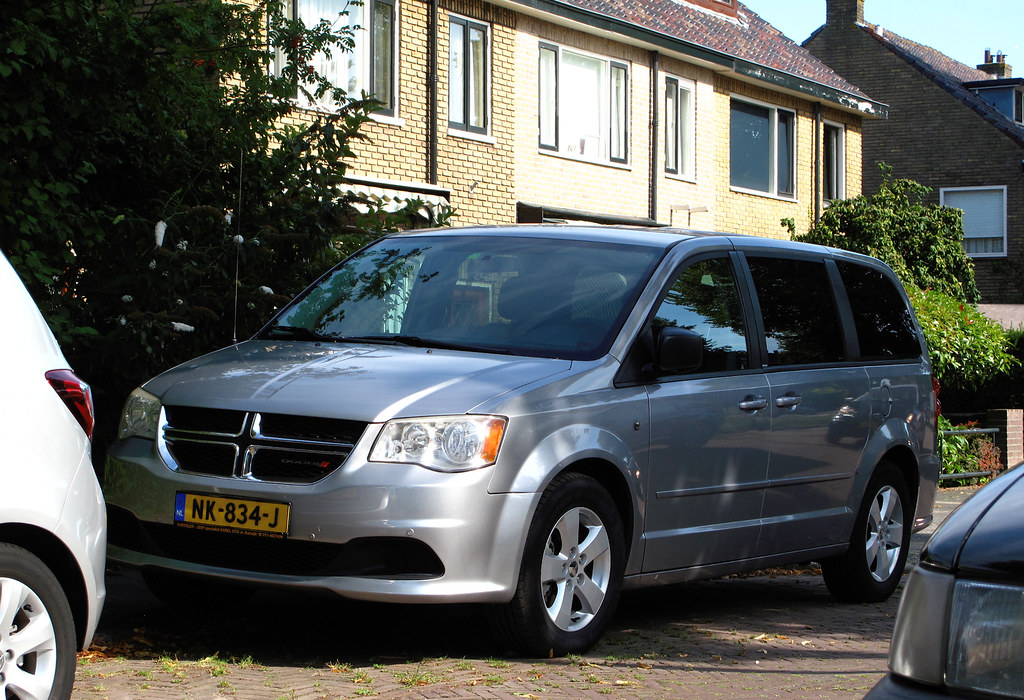
5. **Dodge Grand Caravan**For many families, the Dodge Grand Caravan has been a familiar sight, ferrying kids to soccer practice, embarking on road trips, and generally serving as a versatile hauler for people, pets, and cargo. Many have memories, some fond and some perhaps not so much, of traveling in these minivans. However, beneath the veneer of family utility, the Grand Caravan often proved to be “anything but smooth driving” for its owners, frequently leading to deep regrets about its long-term reliability and performance.
At the heart of many owners’ frustrations with the Dodge Grand Caravan is the transmission, with “transmission failure” being a particularly common complaint. This isn’t just about the transmission suddenly giving up; often, prior to a complete breakdown, owners experience a litany of troubling symptoms. These include “delayed gear engagement,” where the car hesitates before shifting, “rough shifting” that makes for an uncomfortable ride, and “slipping gears,” which can be both alarming and dangerous, severely undermining confidence in the vehicle’s mechanical integrity.
In addition to the pervasive transmission issues, many owners have also reported persistent “electrical system problems,” which can affect a wide range of components from the infotainment system to essential lighting and power features, adding to the daily aggravation. “Heavy oil consumption” is another frequent complaint, leading to more frequent and costly top-offs or even potential engine damage if neglected. Faced with these compounding issues, it’s no wonder that if owners “could rewind time and have a do-over, they would gladly choose something else.” The Grand Caravan, for all its family-friendly intentions, often became a source of significant mechanical and financial strain.
Car Model Information: 2025 Hyundai PALISADE XRT
Caption: 2011 Dodge Grand Caravan Mainstreet
Name: Dodge Grand Caravan
Manufacturer: Chrysler Corporation,Daimler AG,Chrysler LLC,Chrysler Group LLC,FCA US LLC
Class: Minivan
Layout: FF layout,F4 layout
Production: November 2, 1983 –August 21, 2020
ModelYears: 1984–2020
Related: Plymouth Voyager,Chrysler Town & Country (minivan),Dodge Mini Ram,Chrysler Voyager,Volkswagen Routan
Assembly: Windsor, Ontario,Fenton, Missouri,Fenton, Missouri,Fuzhou
Successor: Dodge Journey,Chrysler Voyager
Categories: All-wheel-drive vehicles, All articles with unsourced statements, Articles with short description, Articles with unsourced statements from December 2017, Articles with unsourced statements from May 2009
Summary: The Dodge Caravan is a series of minivans manufactured by Chrysler from the 1984 through 2020 model years. The Dodge version of the Chrysler minivans, was marketed as both a passenger van and a cargo van (the only version of the model line offered in the latter configuration). For 1987, the model line was joined by the long-wheelbase Dodge Grand Caravan. Produced in five generations across 36 model years, the Dodge Caravan is the second longest-lived Dodge nameplate (exceeded only by the Dodge Charger). Initially marketed as the Dodge counterpart of the Plymouth Voyager, the Caravan was later slotted between the Voyager and the Chrysler Town & Country. Following the demise of Plymouth, the model line became the lowest-price Chrysler minivan, ultimately slotted below the Chrysler Pacifica.
Sold primarily in the United States and Canada, the Dodge Caravan was also marketed in Europe and other international markets under the Chrysler brand (as the Chrysler Voyager or Chrysler Caravan). From 2008 onward, Dodge marketed the model line only as the Grand Caravan; Ram Trucks sold a cargo-only version of the model line as the Ram C/V Tradesman. The model line was also rebranded as the Volkswagen Routan from 2009 through 2014.
After the 2020 model year, the Dodge Grand Caravan was discontinued, ending production on August 21, 2020. For 2021 production, the Grand Caravan nameplate was moved to Chrysler, which used it for a Canadian-market version of the Chrysler Pacifica (in the United States, the exact vehicle was marketed as the Chrysler Voyager).
For its entire production run, the Dodge Caravan/Grand Caravan was manufactured by Chrysler Canada (now Stellantis Canada) at its Windsor Assembly facility (Windsor, Ontario). From 1987 until 2007, the model line was also manufactured by Chrysler at its Saint Louis Assembly facility (Fenton, Missouri). Since their introduction in late 1983, over 14.6 million Chrysler minivans have been sold worldwide (including export versions and versions sold through rebranding).
Get more information about: Dodge Caravan
Buying a high-performing used car >>>
Brand: Dodge Model: Grand Caravan
Price: $40,788 Mileage: 5,081 mi.
Read more about: Electrifying the Family Ride: Are 2025 Electric Minivans Finally Practical and Poised to Reshape Your Travel Experience?
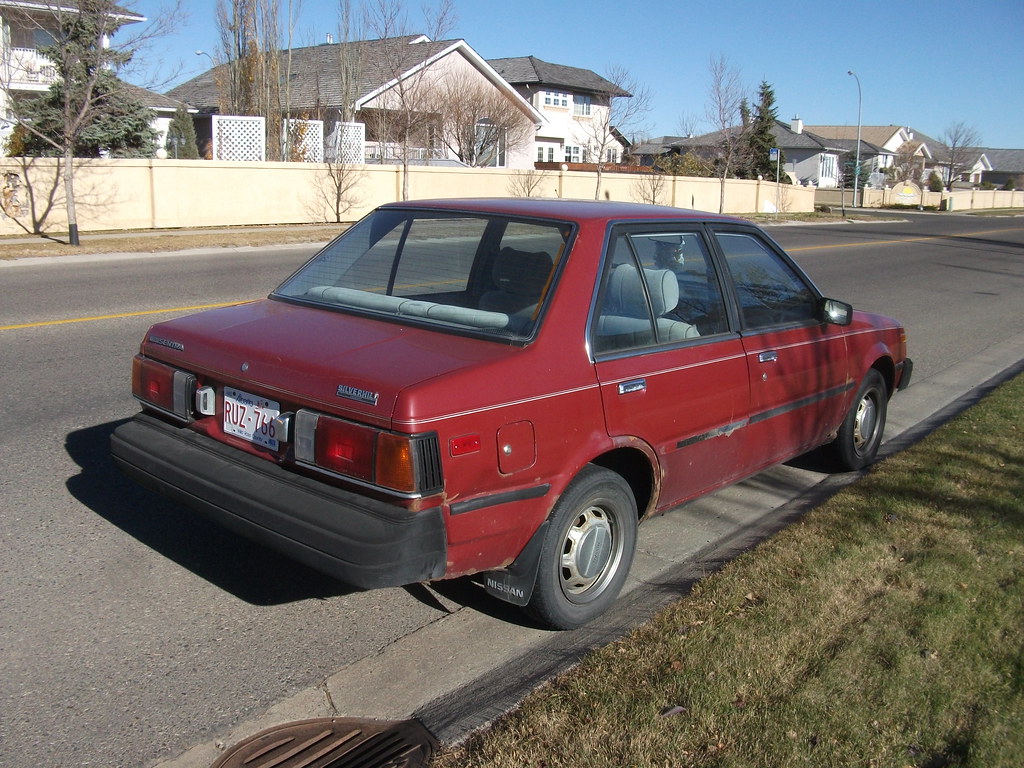
6. **Nissan Sentra**The Nissan Sentra has seen various iterations over the years, and like most vehicles, some model years have certainly been better than others. However, there are particular periods where the Sentra’s reputation takes a serious nosedive, with specific model years being described as nothing short of “horrific.” Prospective buyers are strongly advised to “stay away from the ones made from 2013 to 2019,” as these models are infamous for housing a particularly problematic component that has been a major “thorn in the side of many Sentra owners.”
That thorn, of course, is the continuously variable transmission, or CVT, which has plagued a wide range of Nissan vehicles during these years. In the Sentra, these CVT problems manifest in numerous frustrating ways, significantly diminishing the driving experience and the vehicle’s long-term reliability. Owners frequently report issues such as “overheating,” which can lead to reduced performance and premature failure; “jerky acceleration,” making for an uncomfortable and unpredictable ride; and an overall “shuddering” sensation, indicating mechanical distress within the transmission system.
Adding to this laundry list of performance issues, engine stalling is also a documented problem, which can be particularly dangerous and inconvenient. Beyond the powertrain, the Nissan Sentra from these problematic years has also been subject to “many recalls related to the vehicle’s airbags, seatbelts, brakes, and more.” This extensive range of safety and operational recalls underscores a deeper pattern of quality control concerns. Taken together, these issues paint a picture of a vehicle that, despite its initial affordability, ultimately demands more in terms of repairs and headaches than it ever delivers in long-term satisfaction.
Car Model Information: 2024 Nissan Sentra S
Name: Nissan Sentra
Caption: 2021 Nissan Sentra SR (B18; Canada)
Manufacturer: Nissan
Aka: Nissan Sunny
Production: 1982–present
Class: Subcompact car
Predecessor: Nissan Sunny#B310
Categories: 1990s cars, 2000s cars, 2010s cars, 2020s cars, All Wikipedia articles written in American English
Summary: The Nissan Sentra is a series of automobiles manufactured by the Japanese automaker Nissan since 1982. Since 1999, the Sentra has been categorized as a compact car, while previously it occupied the subcompact class. Until 2006, Sentra was a rebadged export version of the Japanese Nissan Sunny, but since the 2013 model year, Sentra is a rebadged export version of the Sylphy. The Sentra nameplate is not used in Japan. Many other countries in Latin America sell their versions of the Sunny as the Sentra. In Mexico, the first three generations of the Sentra were known as the Nissan Tsuru (Japanese for crane), and the B13 model was sold under that name until 2017, alongside the updated models badged as Sentra.
In North America, the Sentra currently serves as Nissan’s compact car, despite being rated as a mid-size car by the EPA due to its interior volume since the 2007 model year. While previous Sentras were subcompacts, the Sentra has grown over the years, with the Nissan Versa having replaced the Sentra in the entry-level area.
The Sentra name was created for Nissan by Ira Bachrach of NameLab, and Bachrach describes the origin as “Nissan wanted consumers to understand that it was quite safe even though it was small. The word Sentra sounds like central as well as sentry, which evokes images of safety.”
Get more information about: Nissan Sentra
Buying a high-performing used car >>>
Brand: Nissan Model: Sentra
Price: $17,487 Mileage: 24,259 mi.
Read more about: Immediate Regret Behind the Wheel: 15 Vehicles Owners Wished They Never Financed at the Dealership
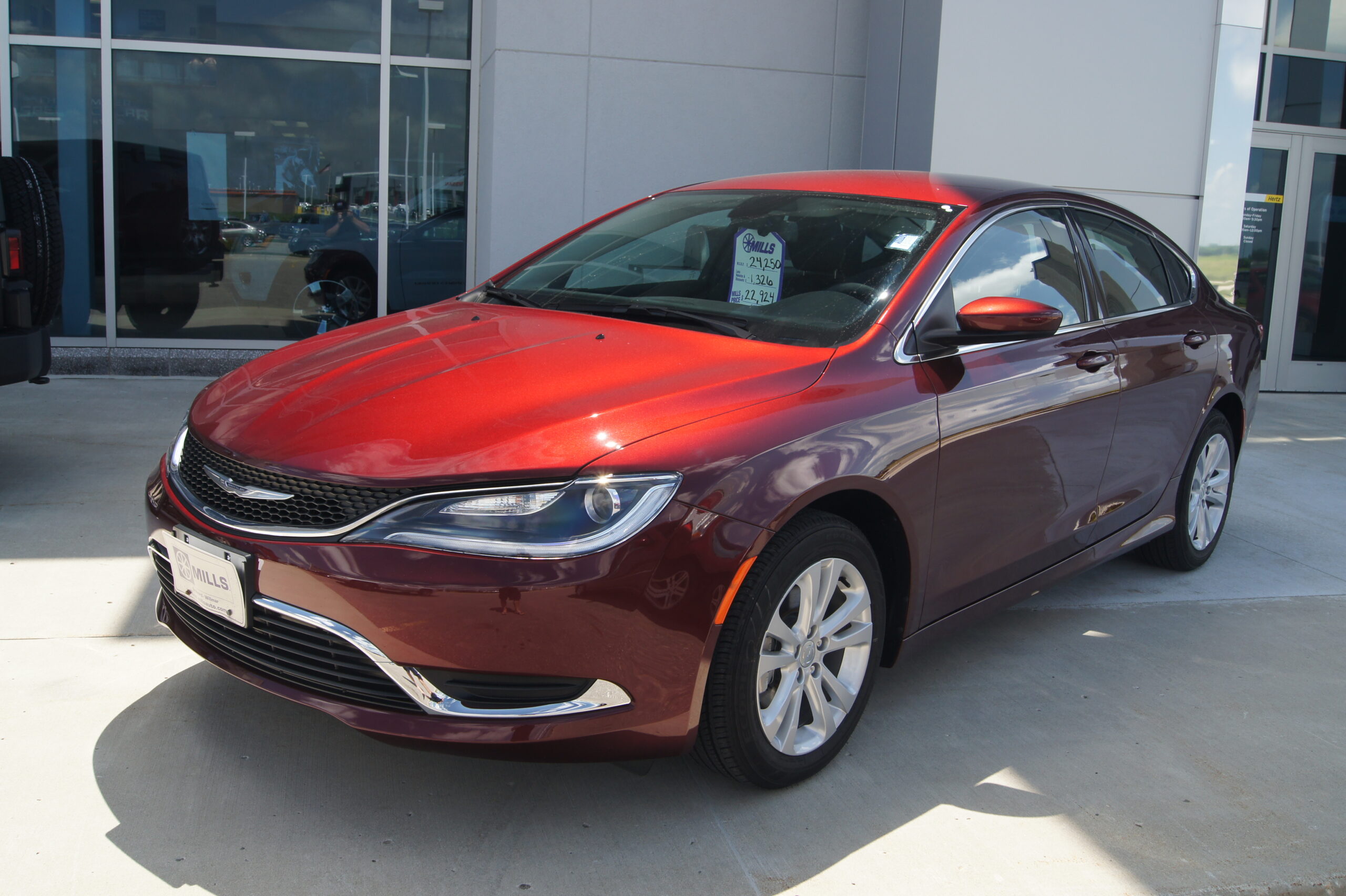
7. **Chrysler 200**The Chrysler 200 was marketed as a stylish and comfortable midsize sedan, initially appealing to many with its sleek design and perceived value. Manufactured from 2011 to 2017, it promised a refined driving experience, yet for a significant number of owners, this promise quickly dissolved into a slew of reliability issues that became increasingly apparent with time. The car, regrettably, has cultivated a reputation for being a source of buyer’s remorse, particularly as it ages and demands more attention than anticipated.
One of the most frequently cited problems by owners of the Chrysler 200, especially those who purchased the 2015, 2016, and 2017 models, concerns its 9-speed automatic transmission. This particular transmission unit proved to be “especially problematic,” often leading to frustrating and unpredictable performance. Unfortunately, these transmission woes were just the beginning, as outright “transmission failure was a thing, too,” leading to costly and often premature replacements that severely impacted the vehicle’s long-term viability and the owner’s peace of mind.
Beyond the transmission, the Chrysler 200 also suffered from recurring “engine performance problems.” These issues could range from a lack of power and responsiveness to more serious mechanical failures, further compounding the reliability concerns. Such pervasive mechanical troubles quickly turn a seemingly good deal into a financial drain, making owners question the wisdom of their initial purchase, especially as repair costs mount up and the vehicle’s overall dependability dwindles over the years.
Furthermore, the interior of the Chrysler 200, while perhaps stylish when new, has often failed to withstand the test of time. Many owners have reported that the materials used in the cabin begin to “wear and tear” prematurely after just a few years of use. Upholstery and dashboard components, instead of maintaining their original appeal, show signs of deteriorating faster than expected, making the car feel older and less refined much sooner than anticipated.
Compounding the interior’s rapid aging, the infotainment system and technology in the Chrysler 200 also tend to become outdated quickly compared to rivals in its class. This contributes to the car feeling less modern and less appealing after five years of ownership, leaving drivers with an interior that lacks both durability and contemporary features. This combined decline in both mechanical reliability and interior quality significantly contributes to owner regret.
Lastly, the Chrysler 200 is plagued by poor resale value, which exacerbates the sense of regret for many owners. Despite its initial popularity, the car’s growing reputation for reliability issues and rapid depreciation means it loses value much faster than many of its competitors. Owners attempting to sell or trade in their car after five years often face a “significant financial loss,” essentially paying a premium for a vehicle that quickly became a liability rather than an asset. For those seeking long-term value and a wise investment, the Chrysler 200 regrettably falls far short of the mark.
The journey through the automotive landscape is full of choices, and as we’ve already seen, not all paths lead to lasting happiness. Our exploration of vehicles that leave owners longing for a do-over continues, shifting focus to models that consistently fail to deliver long-term satisfaction, often plagued by persistent mechanical failures and a frustrating inability to hold their value. This isn’t just about minor inconveniences; it’s about cars that become genuine liabilities, turning daily drives into a constant source of stress.
These next few vehicles serve as crucial warnings, illustrating how initial appearances and even affordability can mask deeper, more enduring problems that only surface after months or years of ownership. So, buckle up as we dive into more stories of automotive regret, helping you navigate away from these vehicular pitfalls.
Read more about: Beyond the Icons: Unearthing 14 Underappreciated Muscle Cars That Deserve Your Attention
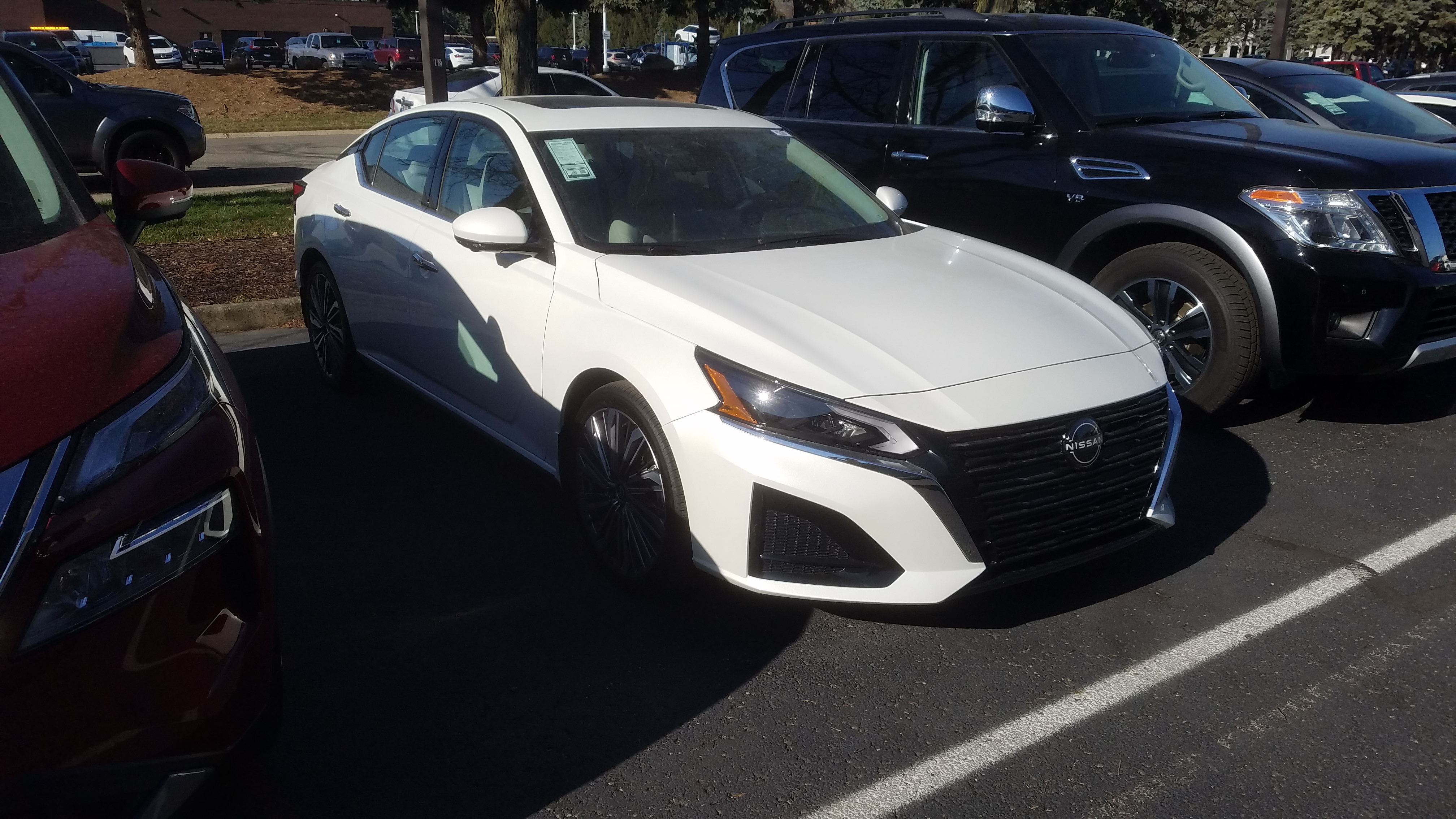
8. **Nissan Altima**The Nissan Altima often appears as a sensible choice for those seeking a reliable midsize sedan. Its comfortable ride and decent fuel economy can be appealing initially, making it seem like a strong contender for daily commutes and family duties. However, many owners discover this initial promise quickly fades, transforming into a saga of mechanical headaches that make them regret their purchase, especially after five years on the road, largely due to its notoriously problematic continuously variable transmission (CVT) from 2013 to 2019.
Beyond the troublesome CVT, which often manifests in jerking, shuddering, and even outright failure leading to costly repairs, the Altima also suffers from a range of other aging-related problems. Owners frequently report concerns with the steering, which can feel vague or unresponsive, impacting confidence, and persistent issues like excessive oil consumption and oil leaks further erode the vehicle’s long-term appeal and an owner’s peace of mind.
Adding to the frustration, the interior quality, while spacious and comfortable when new, doesn’t always stand up well to daily use, with seats losing support and the infotainment system quickly becoming outdated. This rapid decline in both mechanical dependability and interior freshness, coupled with its lower resale value, means owners often face a considerable financial loss when attempting to sell, making the initial ‘good deal’ feel like a long-term regret.
Car Model Information: 2021 Nissan Altima S FWD
Name: Nissan Altima
Caption: 2024 Nissan Altima SR (L34; US)
Manufacturer: Nissan
Aka: Nissan Bluebird
Production: 1992–present
Class: Compact car
Predecessor: Nissan Bluebird,Nissan Stanza
ModelYears: 1993–present
Categories: 2000s cars, 2010s cars, 2020s cars, All-wheel-drive vehicles, All Wikipedia articles written in American English
Summary: The Nissan Altima is a mid-size car manufactured by Nissan since 1992. It is a continuation of the Nissan Bluebird line, which began in 1955.
The Altima has historically been larger, more powerful, and more luxurious than the Nissan Sentra but less so than the Nissan Maxima. The first through fourth-generation cars were manufactured exclusively in the United States and officially sold in North and South America, along with the Middle East and Australia. For other markets, Nissan sold a related mid-size sedan called the Nissan Teana which was between the Altima and Maxima in terms of size. In 2013, the Teana became a rebadged version of the fifth-generation Altima.
The name “Altima” was originally applied to a top trim line of the Nissan Leopard for the Japanese market in 1986, and then to the Nissan Laurel Altima mid-size car sold in Central America and the Caribbean before 1992. In 1992, Nissan discontinued the Stanza which was a Nissan Bluebird clone, replacing it with the US-built Altima, while remaining a compact car. The first Altima was produced in June 1992, as a 1993 model. All Altima models for the North American market were built in Smyrna, Tennessee, until June 2004, when Nissan’s Canton, Mississippi plant also began producing the model to meet high demand.
Get more information about: Nissan Altima
Buying a high-performing used car >>>
Brand: Nissan Model: Altima
Price: $17,961 Mileage: 39,585 mi.
Read more about: Immediate Regret Behind the Wheel: 15 Vehicles Owners Wished They Never Financed at the Dealership
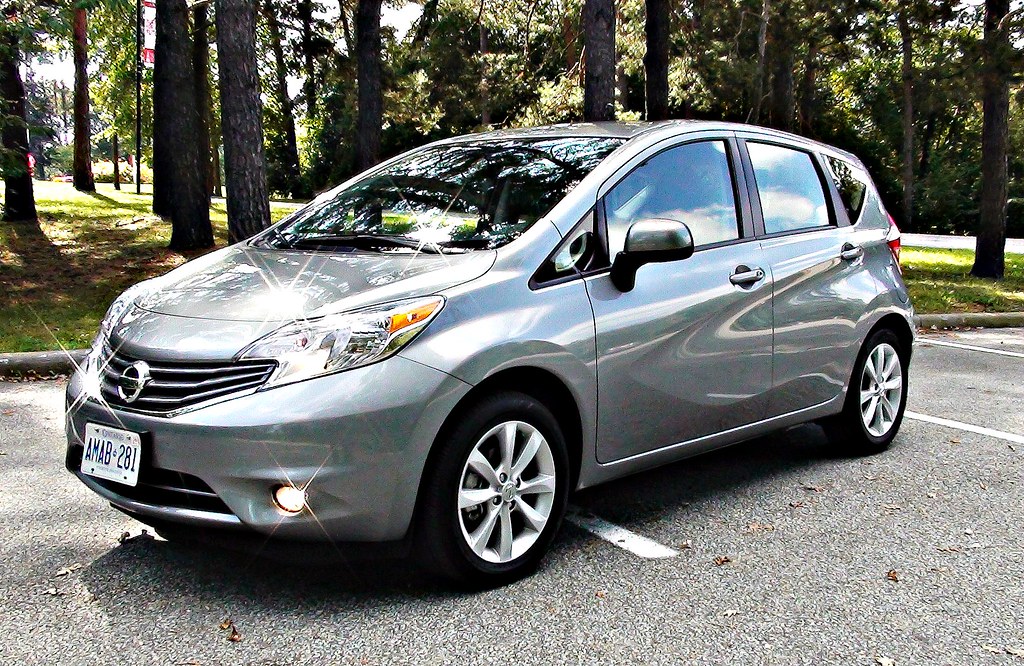
9. **Nissan Versa Note**For budget-conscious buyers, the Nissan Versa Note might seem like an irresistible option, with its super-cheap price tag being its most attractive feature. Yet, as many owners quickly learn, a low initial cost often mirrors a similarly low quality level, turning what seemed like a savvy purchase into a constant source of frustration and regret.
Like many of its Nissan siblings from the same era, the Versa Note is heavily reliant on a continuously variable transmission (CVT), and this is where many of its problems begin. Owners frequently report issues with this transmission, which often manifests as a lack of responsiveness, unpredictable acceleration, and a general feeling of mechanical strain that severely impacts the driving experience.
Compounding the transmission woes is the Versa Note’s anemic acceleration, powered by a 1.6-liter 4-cylinder engine that often struggles to get up to speed. This lack of power can make driving feel sluggish and, at times, unsafe, leaving owners wishing for more zip and solidifying its place on the regret list due to genuinely uninspired and often frustrating performance.
Car Model Information: 2025 Hyundai PALISADE XRT
Name: Nissan Note
Manufacturer: Nissan
Production: 2004–present
Class: Mini MPV
BodyStyle: hatchback
Layout: Front-engine, front-wheel-drive layout,Front-engine, four-wheel-drive layout
Predecessor: Nissan Almera Tino
Aka: Nissan Versa
Caption: Nissan Note (E13)
Categories: 2010s cars, 2020s cars, All-wheel-drive vehicles, All Wikipedia articles written in British English, All articles containing potentially dated statements
Summary: The Nissan Note is a supermini/subcompact hatchback or a mini MPV manufactured and marketed globally by Nissan. Introduced in 2004, the first-generation Note was primarily marketed in Japan and Europe, and was produced in Japan and the United Kingdom. The second-generation model was sold in other regions, including North America where it was manufactured in Mexico and marketed as the Versa Note, and Thailand, where it serves as one of the B-segment hatchback offered by the brand alongside the smaller March/Micra under the Eco Car tax scheme. In 2017, the second-generation Note was replaced by the French-built K14 Micra for the European market. The Versa Note was discontinued in North America in 2019 due to the decreasing demand for subcompact hatchbacks in the region. It continued to be produced and sold in Japan up to the introduction of the third-generation Note in late 2020. The Note was introduced with a series hybrid drivetrain in late 2016 as the Note e-Power. Due to its popularity and the push of electrification, the third-generation Note is only available with the e-Power drivetrain, with a WLTC fuel economy of 29.5 kilometres per litre (69 mpg‑US).
Get more information about: Nissan Note
Buying a high-performing used car >>>
Brand: Nissan Model: Versa Note
Price: $40,788 Mileage: 5,081 mi.
Read more about: Immediate Regret Behind the Wheel: 15 Vehicles Owners Wished They Never Financed at the Dealership
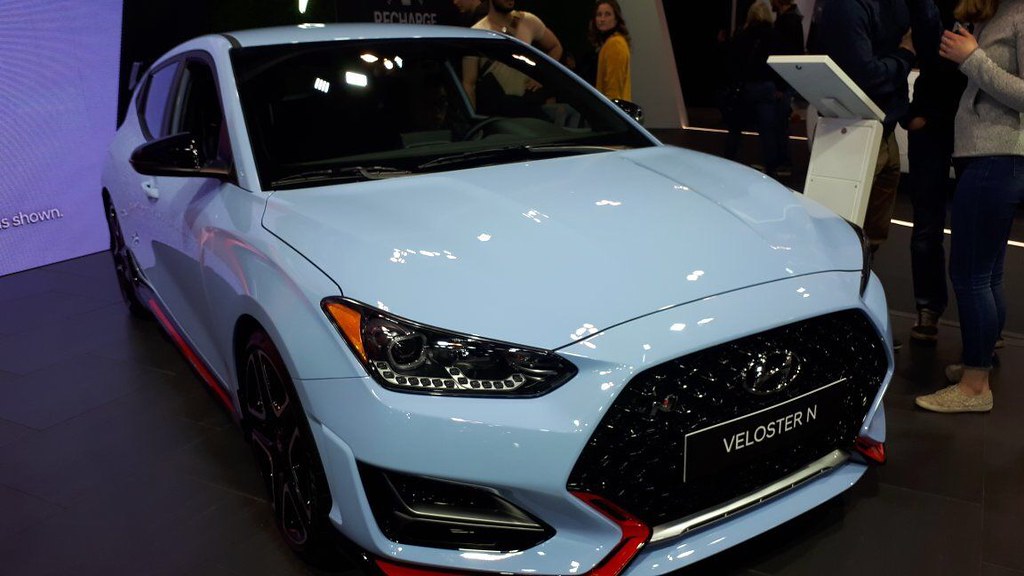
10. **Hyundai Veloster**The Hyundai Veloster has always stood out with its distinctive styling, a sporty, cool-looking facade, and an unusual three-door configuration that promised a fun and dynamic driving experience. However, beneath this appealing exterior, a host of significant mechanical problems has made it a car many owners come to regret, transforming that initial excitement into genuine disappointment.
Unfortunately, the Veloster is plagued by serious engine issues that can, in some cases, lead to catastrophic failure, representing fundamental reliability concerns that often result in incredibly expensive repairs. Adding to this are persistent problems with its dual-clutch transmission, with owners reporting delayed acceleration, disconcerting slipping gears, and jerky shifts that detract significantly from the responsive handling.
As if engine and transmission woes weren’t enough, the Hyundai Veloster also suffers from various suspension and steering problems. These issues can range from excessive road noise and a harsh ride to a feeling of looseness or instability in the steering, further diminishing the driving pleasure and overall quality of the ownership experience for a car that promised a vibrant and engaging drive.
Car Model Information: 2013 Hyundai Veloster Base
Name: Hyundai Veloster
Manufacturer: Hyundai Motor Company
Production: 2011–2022
Class: Sport compact car
Layout: Front-engine, front-wheel-drive layout
BodyStyle: hatchback
Predecessor: Hyundai Tiburon
ModelYears: 2012–2022
Assembly: Ulsan
Categories: All Wikipedia articles in need of updating, All articles with unsourced statements, Articles containing Korean-language text, Articles with short description, Articles with unsourced statements from May 2018
Summary: The Hyundai Veloster is a compact car which was produced by Hyundai from 2011 until 2022. The car differs from most other hatchbacks with its asymmetrical door configuration, featuring one large door on the driver side and two smaller doors on the passenger side. This configuration is more common on commercial vehicles and minivans.
Get more information about: Hyundai Veloster
Buying a high-performing used car >>>
Brand: Hyundai Model: Veloster
Price: $9,489 Mileage: 73,577 mi.
Read more about: Immediate Regret Behind the Wheel: 15 Vehicles Owners Wished They Never Financed at the Dealership
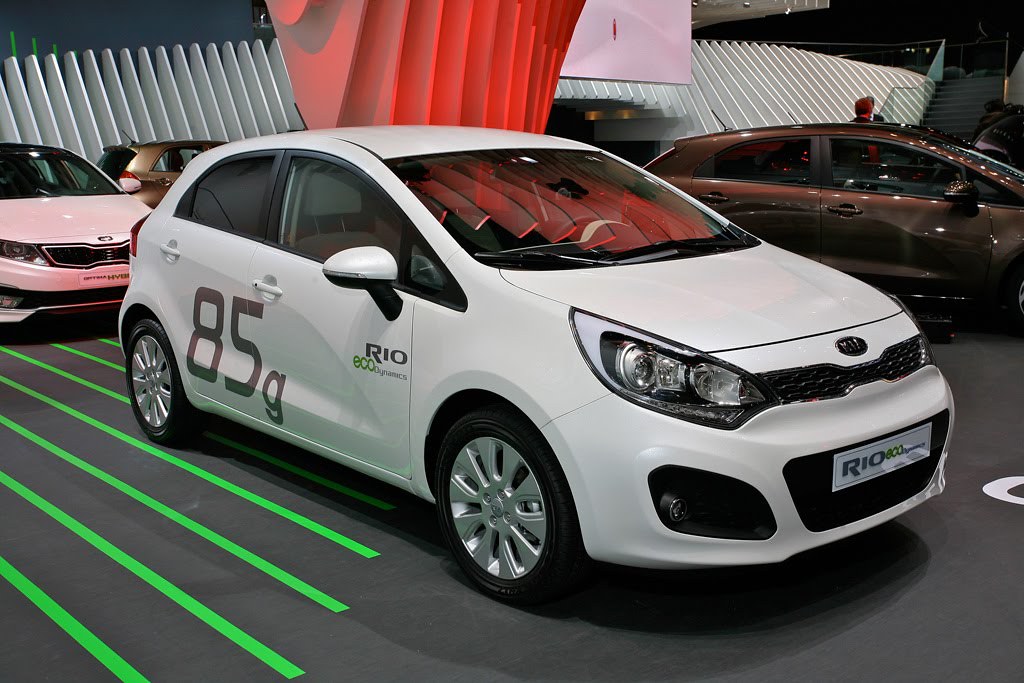
11. **Kia Rio**The Kia Rio has long been a popular choice for those seeking an affordable and fuel-efficient subcompact car, making it an attractive option for first-time buyers or commuters on a budget. Its initial appeal lies in its low purchase price and economical running costs. However, despite these benefits, many Kia Rio owners find themselves grappling with a significant case of buyer’s remorse, particularly as the miles accumulate.
A primary source of frustration often stems from its engine, which has garnered a reputation for various issues, including rough idling and frequent misfires. These problems are usually attributed to issues with essential components like spark plugs or ignition coils, leading to irregular performance and the need for recurring maintenance that quickly chips away at the car’s initial affordability advantage.
Beyond the engine, the Kia Rio also faces criticism for its interior quality. Owners frequently complain about the cheap feel of the interior materials, which can lead to premature wear and tear, making the cabin feel dated and less comfortable much sooner than expected. Combined with general comfort issues, the interior becomes a persistent reminder of the compromises made for the low price, transforming an economical solution into ongoing expenses and daily dissatisfaction.
Car Model Information: 2019 Kia Rio LX
Name: Kia Rio
Caption: Fourth generation Kia Rio
Manufacturer: Kia
Aka: Kia Pride (2005–2017),Kia K2 (China; 2011–2020)
Production: November 1999 – December 2023
ModelYears: 2001–2023 (North America)
BodyStyle: hatchback
Class: Subcompact car
Layout: Front-engine, front-wheel-drive layout
Predecessor: Kia Pride,Kia Avella
Successor: Kia K3 (BL7),Kia Soluto
Categories: 2000s cars, 2010s cars, Articles containing Korean-language text, Articles with short description, CS1 Croatian-language sources (hr)
Summary: The Kia Rio is a subcompact car manufactured by Kia from 1999 to 2023. Body styles have included a three and five-door hatchback and four-door sedan, equipped with inline-four gasoline and diesel engines, and front-wheel drive. The Rio replaced the first generation Pride—a rebadged version of the Ford Festiva—and the Avella, a subcompact sold as a Ford in some markets. A second generation was introduced in 2005 in Europe and in 2006 in North America, sharing its platform with the Hyundai Accent, a subcompact manufactured by its sister Hyundai Motor Company in South Korea. In August 2023, the K3 was introduced as its successor in several markets such as Mexico and the GCC countries.
Get more information about: Kia Rio
Buying a high-performing used car >>>
Brand: Kia Model: Rio
Price: $11,469 Mileage: 49,180 mi.
Read more about: Electrifying the Family Ride: Are 2025 Electric Minivans Finally Practical and Poised to Reshape Your Travel Experience?
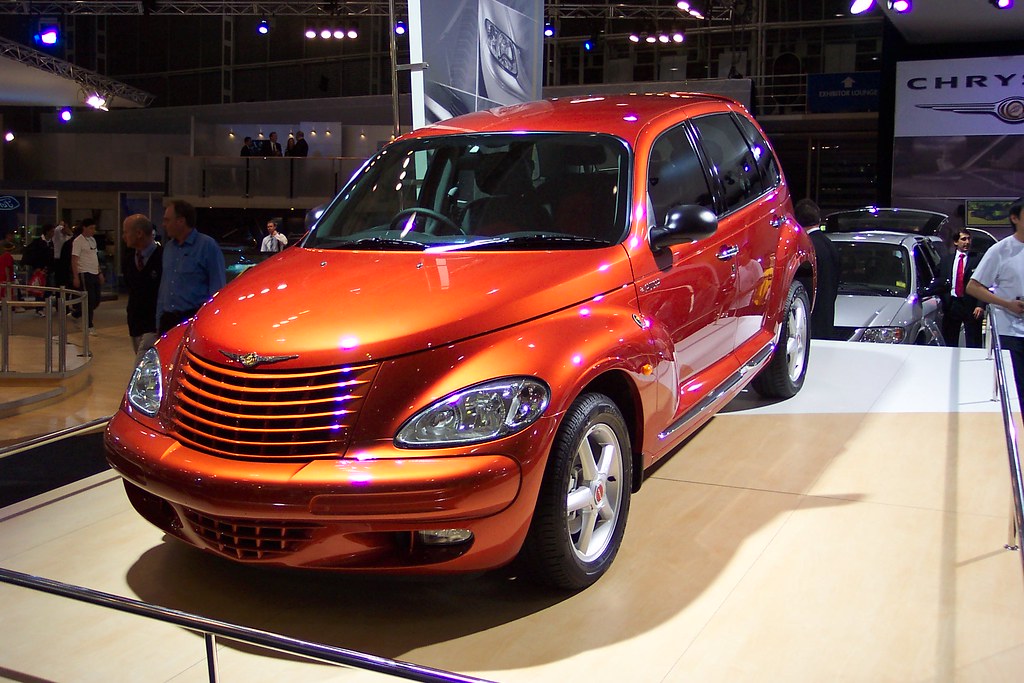
12. **Chrysler PT Cruiser**Ah, the Chrysler PT Cruiser. This compact car, with its distinctive retro styling, has always been a polarizing vehicle, inspiring either strong affection or outright disdain for its unique looks. Some people love its throwback aesthetic; others famously love to hate it. But for many owners, the problems with the PT Cruiser extend far beyond mere aesthetics, encompassing a litany of mechanical issues that inevitably lead to profound buyer’s remorse.
Indeed, trying to list the PT Cruiser’s problems can feel like an endless task, as it seems to suffer from issues across multiple critical systems. Engine issues are particularly prevalent and wide-ranging, with owners frequently reporting frustrating instances of stalling, rough idling, overheating, and serious problems like head gasket failure, all leading to expensive and recurring repairs.
Compounding the engine troubles, the PT Cruiser is also notorious for its transmission and electrical problems, which can manifest as erratic shifting, slippage, complete transmission failure, or issues affecting everything from power windows to the infotainment system. These pervasive issues paint a clear picture of a vehicle that, despite its stylistic flair, consistently falls short in terms of long-term durability and owner satisfaction.
Car Model Information: 2025 Hyundai PALISADE XRT
Name: Chrysler PT Cruiser
Manufacturer: Chrysler
ModelCode: PT,PG
Production: 2000–2010
ModelYears: 2001–2010
Assembly: Toluca, Mexico State
Designer: Bryan Nesbitt
Class: Compact car
BodyStyle: convertible
Platform: Chrysler PT platform
Related: Dodge SRT4,Dodge Neon
Predecessor: Dodge Neon
Successor: Lancia Delta#Third generation
Layout: Front-engine, front-wheel-drive layout
Engine: ubl
Transmission: Ultradrive#40TE
Wheelbase: 103 in
Abbr: on
Length: 168.8 in
Width: 67.1 in
Height: 63 in
Weight: 3123 lb
Categories: 2010s cars, All articles with unsourced statements, Articles with short description, Articles with unsourced statements from March 2018, Cars discontinued in 2010
Summary: The Chrysler PT Cruiser is a compact car that was built by the American company Chrysler from 2001 until 2010. Introduced as a five-door hatchback wagon, a two-door convertible variant was also made from 2005 until 2008.
Originally planned as a Plymouth model, the PT Cruiser was ultimately marketed as a Chrysler when Plymouth was discontinued. Intended to invoke 1930s aesthetics, the exterior of the PT Cruiser was designed by Bryan Nesbitt. The model received an intermediate facelift for the 2006 model year. Interior packaging was noted for its high roof, high h-point seating, and flexible cargo and passenger configurations enabled by a multi-level rear cargo shelf and rear seats a user could fold, tumble, or remove.
The PT Cruiser was produced in Mexico and Austria at the Toluca Car Assembly and Eurostar Automobilwerk factories respectively. By the end of production in July 2010, worldwide production had reached 1.35 million.
In its nameplate, PT stands for “Personal Transport” or “Personal Transportation.” PT was the PT Cruiser’s product code for the Mexican-made units.
Get more information about: Chrysler PT Cruiser
Buying a high-performing used car >>>
Brand: Chrysler Model: PT Cruiser
Price: $40,788 Mileage: 5,081 mi.
Read more about: Beyond the Icons: Unearthing 14 Underappreciated Muscle Cars That Deserve Your Attention
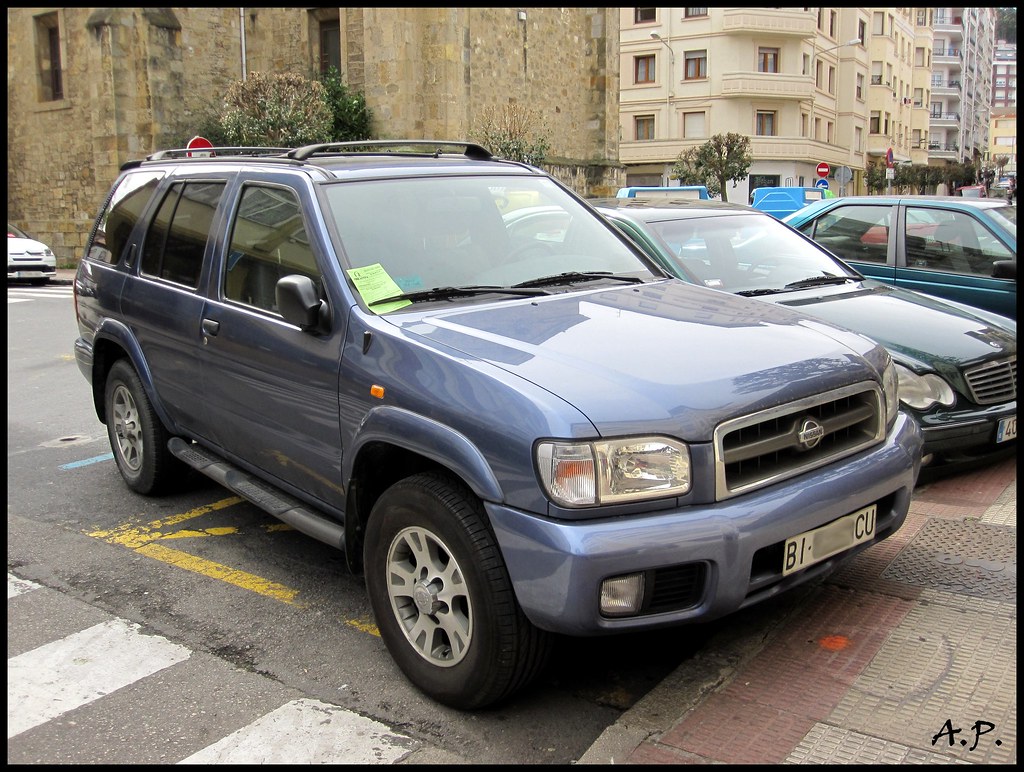
13. **Nissan Pathfinder**The Nissan Pathfinder has, for many years, been a popular choice in the SUV segment, appealing to families and adventurers alike with its promise of versatility and rugged capability. However, despite its widespread popularity, a significant number of owners find themselves regretting their purchase, as the Pathfinder has a documented history of problems that can quickly dampen enthusiasm, largely due to its infamous continuously variable transmission (CVT).
This transmission, which has plagued several Nissan vehicles, often causes issues such as rough shifting, a disconcerting shuddering sensation, and even overheating during normal operation. These problems not only detract from the driving experience but also point to fundamental reliability flaws that can lead to costly interventions, often culminating in the need for expensive transmission replacement.
Adding to the transmission woes, Pathfinder owners also frequently report various engine issues, ranging from minor performance inconsistencies to more serious mechanical concerns, further compromising the vehicle’s dependability. Furthermore, problems with the fuel system are also a source of frustration, making the Nissan Pathfinder a challenging vehicle to own long-term, consistently frustrating its drivers.
Car Model Information: 2018 Nissan Pathfinder SL
Name: Nissan Pathfinder
Caption: 2023 Nissan Pathfinder Platinum 4WD (R53, US)
Manufacturer: Nissan
Production: 1985–present
Layout: unbulleted list
Chassis: unbulleted list
Predecessor: unbulleted list
Successor: unbulleted list
Categories: 1990s cars, 2000s cars, 2010s cars, 2020s cars, All-wheel-drive vehicles
Summary: The Nissan Pathfinder is a range of sport utility vehicles manufactured by Nissan since 1985. Until the third-generation model, the Pathfinder is based on Nissan’s compact pickup truck platform which it shares with the Navara/Frontier. The Pathfinder was marketed as the Nissan Terrano outside North America. Beginning in 2004, the vehicles were marketed globally as the Pathfinder. In 2012, the R52 series Pathfinder was released as a three-row crossover SUV based on the unibody Nissan D platform, moving away from the body-on-frame chassis format. The role of a mid-size body-on-frame SUV in Nissan’s global lineup was passed to the Terra/X-Terra, which was released in 2018 and based on the D23 series Navara.
Get more information about: Nissan Pathfinder
Buying a high-performing used car >>>
Brand: Nissan Model: Pathfinder
Price: $17,961 Mileage: 50,723 mi.
Read more about: Immediate Regret Behind the Wheel: 15 Vehicles Owners Wished They Never Financed at the Dealership

14. **Nissan Frontier**For those in the market for a mid-size pickup truck, the Nissan Frontier often presents itself as a straightforward, no-nonsense option, promising utility and ruggedness. However, for a substantial number of owners, this promise has dissolved into a litany of persistent problems that leave them quite literally shaking their heads and pounding their dashboards in frustration, turning the truck into more of a liability than a loyal workhorse.
The most notorious issues, particularly affecting the 2005 to 2010 model years, center on its transmission. This period is infamous for a critical design flaw where the radiator leaks coolant directly into the transmissions, leading to severe problems including slipping gears, distinctly herky-jerky shifting, and ultimately, premature transmission failure. For a truck designed for heavy use, such a fundamental flaw is simply unacceptable and incredibly costly.
But the transmission isn’t the only component causing headaches. Frontier owners also frequently report various engine issues, which can compromise the truck’s power and reliability, alongside significant timing chain problems requiring complex and expensive repairs. These combined mechanical struggles create a grim picture of a vehicle that truly fails in core mechanical integrity, making long-term ownership a gamble and a source of constant stress and financial drain.
It’s truly fascinating, isn’t it, how a vehicle that once symbolized freedom and a fresh start can, over time, transform into a genuine source of regret? We’ve journeyed through the parking lot purgatory of 14 vehicles that, despite their initial allure or practical promises, consistently let their owners down. These aren’t just isolated incidents; they’re patterns of persistent mechanical issues, rapidly depreciating value, and an overall failure to deliver long-term satisfaction.
Car Model Information: 2017 Nissan Frontier SV-I4
Categories: All set index articles, Articles with short description, Nissan vehicles, Set index articles on cars, Short description is different from Wikidata
Summary: The Nissan Frontier is a nameplate used on three different pickup truck models by Nissan:
Nissan Frontier (international), an alternative nameplate for the NP300/Navara on some markets.
Nissan Frontier (North America), a rebadged NP300/Navara from 1997 to 2021, then became a separate model since 2021.
Nissan Frontier Pro, a rebadged Dongfeng Z9 that will be available from 2025. Available as both a diesel and plug-in hybrid, with the latter being the initial variant.
Get more information about: Nissan Frontier
Buying a high-performing used car >>>
Brand: Nissan Model: Frontier
Price: $17,435 Mileage: 63,351 mi.
Read more about: Immediate Regret Behind the Wheel: 15 Vehicles Owners Wished They Never Financed at the Dealership
The takeaway here isn’t just a list of cars to avoid; it’s a powerful reminder that an informed decision is your best defense against buyer’s remorse. Learning from the collective experiences—and frustrations—of other drivers can save you not only thousands of dollars in repairs and lost value but also countless hours of stress and inconvenience. Before you sign on that dotted line, remember these cautionary tales. Do your homework, listen to the wisdom of those who’ve come before you, and prioritize a vehicle that’s built to truly go the distance, year after year, without constantly testing your patience or emptying your wallet.


